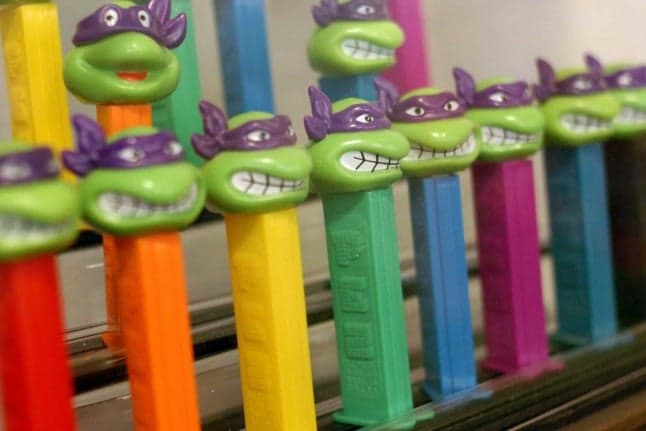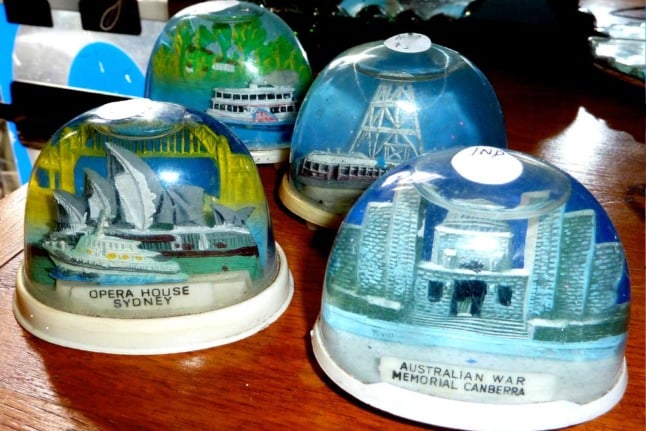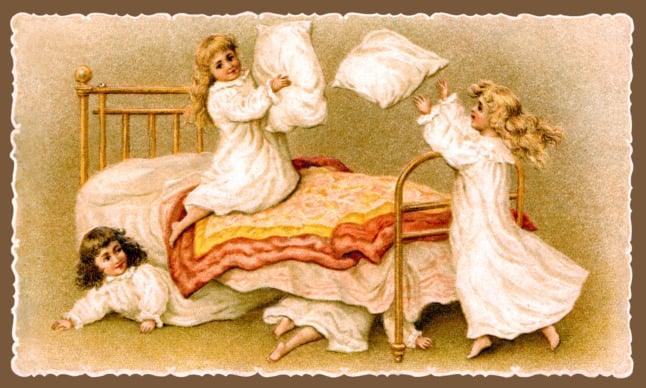Nine inventions you might be surprised are actually Austrian

OK so we know about Arnie, but there are plenty of Austrian discoveries that you might not know are actually Austrian. Here are a few surprises.
From famous to infamous, there are plenty of well known people who come from Austria.
For centuries, Mozart has been synonymous with Austria and Salzburg, while Arnold Schwarzenegger is probably the most famous living Austrian.
Then of course there's Adolf, but this list is about things that are surprisingly Austrian, so the less said about him the better.
The following are some Austrian contributions to the world you might be surprised about. Read on!
Red Bull
OK so most of you know this, but Austria is indeed responsible for the energy drink Red Bull.
The highest selling energy drink in the world, Red Bull was created and marketed by Austrian entrepreneur Dietrich Mateschitz.
He was inspired by a pre-existing energy drink named Krating Daeng - translating to ‘red bison’ - which was first invented and sold in Thailand.
He took this idea, modified the ingredients to suit the tastes of westerners, and founded Red Bull GmbH in Austria in 1987.
As of 2021, he’s amassed a fortune of close to $30 billion and just sneaks into the top 40 richest people in the world.
Snow globes
Yes, snow globes (Schneekugel) were actually invented in Austria.
They were invented by Austrian Erwin Perzy, a manufacturer or surgical instruments, by accident in the 1800s.
Perzy had been hoping to develop an extra bright source of light and had been experimenting with small reflective particles.
When he moved the globe, the effect reminded him of snowfall and he got the idea.
Perzy’s family still run a business manufacturing and selling snow globes in Vienna, where they are still made from glass and the material used to make up the snow is still a secret.

Australian snow globes. By Tangerineduel - Own work, CC BY-SA 4.0,
Danishes (yes, really)
A breakfast and afternoon tea staple across the globe, it might be a surprise to find out that the Danish doesn’t come from Denmark at all.
Don’t believe us? Ask the Danish. This is already starting to sound like a bad Pulp Fiction impression, but do you know what they call a Danish in Denmark?
Vienna bread. No, seriously.
The way of making Danishes - a variant of puff pastry made of laminated yeast-leavened dough that creates a layered texture - was brought to Copenhagen by Austrian bakers.
The name became prominent when Danish people made the move to the United States and the pastries became popular - and the rest is tasty, tasty history.
Postcards
In 1869 economist Emanuel Alexander Herrmann published an article in Austria's paper Neue Freie Presse "Über eine neue Art des Korrespondenzmittels der Post”, or “About a novel means of postal correspondence”.
The letter proposed that all envelope-size cards, whether written, produced by copying machine, or printed, ought to be admitted as mail if they contained not more than 20 words including address and sender's signature.
Britain followed the Austrian example and introduced the postcard a year later.

An Austrian postcard from 1901. Image: Wikicommons
PEZ
Made of artificial colours and flavours. Squashed out of cartoon characters into artificial shapes. Zero nutritional value. What sounds more American than that?
But no, PEZ, the candy, is in fact Austrian.
An Austrian by the name of Eduard Haas III invented the collectable cult sweet known as PEZ in 1927, as an alternative to smoking.
PEZ is a shortened version of the German word for peppermint - PfeffErminZ.
Twenty years later Haas invented the PEZ dispenser, which resembles a cigarette lighter.
The sweets were originally targeted at adults and it was not until the 1950s when PEZ began to be sold in America, that the cartoon character tops and fruity flavours were added to appeal to children.
Last Reminder❕❕❕
Just 1 hour to go: https://t.co/eolitMd2x9#pez #charity #royalwedding2018 #meghanmarkle #harry #lastchance #love #goodcause #makeawishuk #makeawishfoundation #pezdispensers #rare pic.twitter.com/tSjX0i7dLa
— PEZ (@PEZofficial) May 13, 2018
Psychoanalysis
OK, so you knew Sigmund Freud was going to make an appearance in this list somewhere.
The father of making you worry that you were attracted to your mother was famous for a range of things, including novel approach to sex, dreams and penis envy.
While some of his techniques and ideas haven’t aged as well as he’d like, his contribution to therapy - and in particular psychoanalysis - was and remains revolutionary.
Psychoanalysis was popularised by Sigmund Freud.
In creating a clinical method for treating mental illnesses through dialogue between a patient and a psychoanalyst, Freud developed techniques such as the use of free association.
The Vienna flat where he lived for 47 years, and produced the majority of his writings, is now a museum documenting his life and work.
However his famous couch is in the Freud Museum in London, as Freud took his furniture with him when he fled German-annexed Austria to avoid Nazi prosecution.
Slo-mo/slow motion
Speak to a German and they’ll tell you that things tend to be a little slower in Austria - but that’s not what we mean by inventing slo/mo.
We mean slow motion camera footage.
Slo-mo is an effect in film-making where time appears to be slowed down.
It was invented by an Austrian priest, August Musger, in the early 20th century.
Musger, a passionate cineaste, invented the slow motion technique using a mirrored drum as a synchronising mechanism.
The device he used was patented in 1904 and was first presented in Graz, Styria in 1907. Where would television sport broadcasts, scientific documentary films, or action movies be without slowmo?

Slow motion is Austrian.
Swarovski crystals
Swarovski’s luxury cut glass (or ‘crystal’) company might have come to worldwide fame, but it is in fact based in Tyrol.
In 1892 Daniel Swarovski patented an electric cutting machine that enabled the production of crystal glass.
In 1895, Swarovski financier Armand Kosman and Franz Weis founded the Swarovski company, and established a factory in Wattens to take advantage of local hydroelectricity for the energy-intensive grinding processes.
Today Swarovski crystals adorn clothes, shoes, handbags and mobile phones of classy people everywhere.
Blood types
OK, so Austria didn’t technically invent blood types because they were actually invented by whoever invented blood, but blood types were first discovered in Austria.
Karl Landsteiner, an Austrian biologist and physician, first distinguished the main blood types in 1900.
He later identified the Rhesus factor, in 1937, which enabled doctors to transfuse blood without endangering the patient′s life.
In 1930 he received the Nobel Prize in Physiology or Medicine, and is recognised as the father of transfusion medicine.
Comments
See Also
From famous to infamous, there are plenty of well known people who come from Austria.
For centuries, Mozart has been synonymous with Austria and Salzburg, while Arnold Schwarzenegger is probably the most famous living Austrian.
Then of course there's Adolf, but this list is about things that are surprisingly Austrian, so the less said about him the better.
The following are some Austrian contributions to the world you might be surprised about. Read on!
Red Bull
OK so most of you know this, but Austria is indeed responsible for the energy drink Red Bull.
The highest selling energy drink in the world, Red Bull was created and marketed by Austrian entrepreneur Dietrich Mateschitz.
He was inspired by a pre-existing energy drink named Krating Daeng - translating to ‘red bison’ - which was first invented and sold in Thailand.
He took this idea, modified the ingredients to suit the tastes of westerners, and founded Red Bull GmbH in Austria in 1987.
As of 2021, he’s amassed a fortune of close to $30 billion and just sneaks into the top 40 richest people in the world.
Snow globes
Yes, snow globes (Schneekugel) were actually invented in Austria.
They were invented by Austrian Erwin Perzy, a manufacturer or surgical instruments, by accident in the 1800s.
Perzy had been hoping to develop an extra bright source of light and had been experimenting with small reflective particles.
When he moved the globe, the effect reminded him of snowfall and he got the idea.
Perzy’s family still run a business manufacturing and selling snow globes in Vienna, where they are still made from glass and the material used to make up the snow is still a secret.

Danishes (yes, really)
A breakfast and afternoon tea staple across the globe, it might be a surprise to find out that the Danish doesn’t come from Denmark at all.
Don’t believe us? Ask the Danish. This is already starting to sound like a bad Pulp Fiction impression, but do you know what they call a Danish in Denmark?
Vienna bread. No, seriously.
The way of making Danishes - a variant of puff pastry made of laminated yeast-leavened dough that creates a layered texture - was brought to Copenhagen by Austrian bakers.
The name became prominent when Danish people made the move to the United States and the pastries became popular - and the rest is tasty, tasty history.
Postcards
In 1869 economist Emanuel Alexander Herrmann published an article in Austria's paper Neue Freie Presse "Über eine neue Art des Korrespondenzmittels der Post”, or “About a novel means of postal correspondence”.
The letter proposed that all envelope-size cards, whether written, produced by copying machine, or printed, ought to be admitted as mail if they contained not more than 20 words including address and sender's signature.
Britain followed the Austrian example and introduced the postcard a year later.

PEZ
Made of artificial colours and flavours. Squashed out of cartoon characters into artificial shapes. Zero nutritional value. What sounds more American than that?
But no, PEZ, the candy, is in fact Austrian.
An Austrian by the name of Eduard Haas III invented the collectable cult sweet known as PEZ in 1927, as an alternative to smoking.
PEZ is a shortened version of the German word for peppermint - PfeffErminZ.
Twenty years later Haas invented the PEZ dispenser, which resembles a cigarette lighter.
The sweets were originally targeted at adults and it was not until the 1950s when PEZ began to be sold in America, that the cartoon character tops and fruity flavours were added to appeal to children.
Last Reminder❕❕❕
— PEZ (@PEZofficial) May 13, 2018
Just 1 hour to go: https://t.co/eolitMd2x9#pez #charity #royalwedding2018 #meghanmarkle #harry #lastchance #love #goodcause #makeawishuk #makeawishfoundation #pezdispensers #rare pic.twitter.com/tSjX0i7dLa
Psychoanalysis
OK, so you knew Sigmund Freud was going to make an appearance in this list somewhere.
The father of making you worry that you were attracted to your mother was famous for a range of things, including novel approach to sex, dreams and penis envy.
While some of his techniques and ideas haven’t aged as well as he’d like, his contribution to therapy - and in particular psychoanalysis - was and remains revolutionary.
Psychoanalysis was popularised by Sigmund Freud.
In creating a clinical method for treating mental illnesses through dialogue between a patient and a psychoanalyst, Freud developed techniques such as the use of free association.
The Vienna flat where he lived for 47 years, and produced the majority of his writings, is now a museum documenting his life and work.
However his famous couch is in the Freud Museum in London, as Freud took his furniture with him when he fled German-annexed Austria to avoid Nazi prosecution.
Slo-mo/slow motion
Speak to a German and they’ll tell you that things tend to be a little slower in Austria - but that’s not what we mean by inventing slo/mo.
We mean slow motion camera footage.
Slo-mo is an effect in film-making where time appears to be slowed down.
It was invented by an Austrian priest, August Musger, in the early 20th century.
Musger, a passionate cineaste, invented the slow motion technique using a mirrored drum as a synchronising mechanism.
The device he used was patented in 1904 and was first presented in Graz, Styria in 1907. Where would television sport broadcasts, scientific documentary films, or action movies be without slowmo?

Swarovski crystals
Swarovski’s luxury cut glass (or ‘crystal’) company might have come to worldwide fame, but it is in fact based in Tyrol.
In 1892 Daniel Swarovski patented an electric cutting machine that enabled the production of crystal glass.
In 1895, Swarovski financier Armand Kosman and Franz Weis founded the Swarovski company, and established a factory in Wattens to take advantage of local hydroelectricity for the energy-intensive grinding processes.
Today Swarovski crystals adorn clothes, shoes, handbags and mobile phones of classy people everywhere.
Blood types
OK, so Austria didn’t technically invent blood types because they were actually invented by whoever invented blood, but blood types were first discovered in Austria.
Karl Landsteiner, an Austrian biologist and physician, first distinguished the main blood types in 1900.
He later identified the Rhesus factor, in 1937, which enabled doctors to transfuse blood without endangering the patient′s life.
In 1930 he received the Nobel Prize in Physiology or Medicine, and is recognised as the father of transfusion medicine.
Join the conversation in our comments section below. Share your own views and experience and if you have a question or suggestion for our journalists then email us at [email protected].
Please keep comments civil, constructive and on topic – and make sure to read our terms of use before getting involved.
Please log in here to leave a comment.